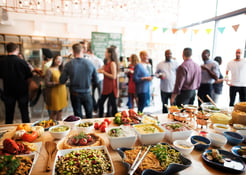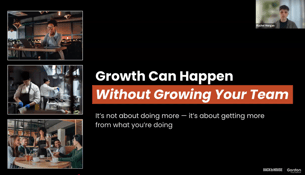Your restaurant website is the first thing that many of your prospective customers will see. It’s important to make a good impression. So as you build your restaurant website, give careful thought to exactly how this website represents your business.
Your website should be the centerpiece of your digital restaurant marketing strategy–an online space that drives business to your dining room or ordering system. It is absolutely critical that you design this site with several key features in mind.
5 Tips For Building an Effective Restaurant Website
If you're struggling to figure out how to build a restaurant website that fits into your restaurant marketing strategy and increases your profitability
1. Spotlight Your Brand
Your website should be an extension of your physical space, an online home that gives prospective customers a sense of how your restaurant looks and feels. Convey your brand identity in everything from your domain name and layout to the colors scheme and the voice of your copy. Your web design should capture the ambience, style and vibe of your restaurant. Think of the website as the digital front door to your restaurant. Give your visitors a sense of what to expect when they step inside.
2. Make a Checklist of Essential Pages
Most effective restaurant websites have a few essential pages in common—Home, Menu, About Us, Contact, and Reservation/Order pages are all a must. Many restaurant websites also feature photo galleries, which can serve as a showcase for your food, space, and ambience. Most importantly, make sure your website is easy to navigate and your online Menu is easy to use.
3. Integrate Seamlessly with Ordering and Reservation Systems
Your booking and ordering systems should be fast, simple, and seamlessly integrated with the rest of your website. Even a slight hiccup with your ordering system may encourage a prospective customer to look elsewhere. Whether you use a third-party provider for your ordering and reservations, or you build these functions directly into your website, make sure the experience is as convenient as possible for your customers.
4. Incorporate High-Quality Visuals
Low-resolution graphics and unflattering food photography can do a ton of damage to your reputation. The same is true of a website that looks cheaply constructed and out-of-date. Prospective customers may assume the same qualities hold true of your physical space. Be sure that your online visual presentation is as smart, stylish, and pleasing to the eye as your actual restaurant.
5. Optimize for Search Engines (SEO)
A great restaurant website is only great if people actually see it. We live in a search-engine driven world. Make sure your website is optimized to survive here. Use relevant keywords, meta tags, and meta descriptions to improve your website's visibility on search engine results pages (SERPs). And be sure to tailor your language to the local areas that you serve in order to attract the right customers.
Maximize the impact of your restaurant marketing efforts by building a website that does these things well. The result will be a powerful driver of business and an online home that makes a great first impression.
A Checklist for Effective Restaurant Marketing
A website alone isn't enough to bring customers to your business. If you're interested in driving traffic with an online marketing strategy for your restaurant, you have to take a varied approach to ensure the best outcome. It can be easy to get overwhelmed by all the avenues available to you to market your restaurant business, so don't be afraid to start small and leave room to grow as your business grows.
Leverage Social Media Marketing
Incorporate share buttons into your restaurant website and create a presence on popular social media platforms. Use tools like Facebook, Instagram, Twitter, and Tik-Tok to engage your audience, promote special events, and provide updates on your menu, space, or activities within the community.
Build an Email List
An active email list remains one of the most effective ways to engage customers. Your website should serve as a portal for gathering subscribers. Use your email list to distribute a newsletter, promote loyalty programs, and personalize messaging based on customer preferences.
Partner with Food Influencers
Collaborate with local food bloggers and social media influencers. Plan on offering complimentary meals and exclusive tastings, but anticipate that some influencers also charge a fee for their services.
Plan Promotions and Events
Give your customers reasons to keep coming back to both your website and your restaurant. Plan theme nights, host special events, and use every online channel at your disposal to encourage attendance. Use your website and social media channels to show your community that there’s always something happening at your restaurant.
Engage Your Community
Get involved. Take part in community events, charity drives, and local business initiatives. Nurture partnerships, sponsor youth activities, and take advantage of opportunities to create positive brand visibility. And of course, share everything you’re doing on your website!
Measure and Analyze The Impact of Your Website on Your Business
Once you know how to build a restaurant website and incorporate it into your broader restaurant marketing mix, it’s important to monitor, measure, and analyze your results. Monitor website traffic, user behavior, and conversion rates. Use key metrics like page views, bounce rate, and time on site to find out what’s working and what isn’t. Social media also offers opportunities for performance tracking with engagement metrics such as follows, likes, shares, and comments.





